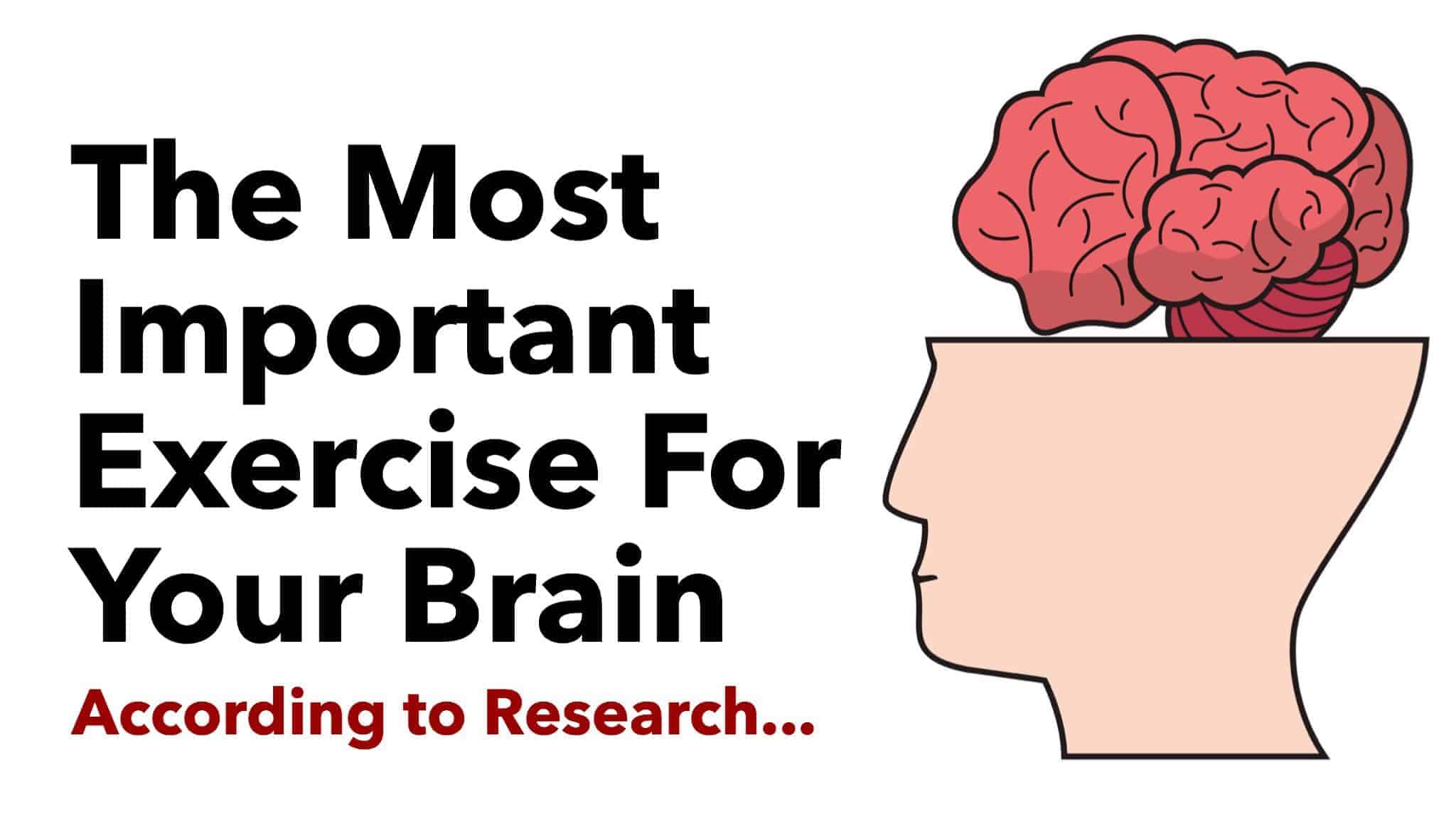Exercise in any form is, arguably, the best thing you can do for a healthy body and brain (along with excellent nutrition!).
Concerning brain benefits, any exercise promotes brain health. Here’s a snippet from a Harvard Medical School (HMS) article titled Regular exercise changes the brain to improve memory, thinking skills:
“Exercise helps memory and thinking through both direct and indirect means. The benefits of exercise come directly from its ability to reduce insulin resistance, reduce inflammation, and stimulate the release of growth factors – chemicals in the brain that affect the health of brain cells, the growth of new blood vessels in the brain, and even the abundance and survival of new brain cells.”
But have you ever wondered what the best type of exercise is for your brain is?
Research Reveals The Most Important Exercise For Your Brain
“Regular aerobic exercise will bring remarkable changes to your body, your metabolism, your heart, and your spirits. It has a unique capacity to exhilarate and relax, to provide stimulation and calm, (and) to counter and dissipate stress.” – Harvard Heath Publications
The answer: any exercise that gets you moving, gets your heart rate up, and breaks a sweat using repetitive motion – in other words, aerobic exercise.
Aerobic exercise defined
The American College of Sports Medicine (ACSM) defines aerobic exercise as “any activity that uses large muscles groups, can be maintained continuously, and is rhythmic in nature.”
When we think of the term ‘aerobic exercise,’ too often we picture someone jogging or running on a treadmill or sidewalk, but this is a misconception. Here’s a short list of aerobic exercises:
- Walking
- Running
- Swimming
- Cycling
- Rowing
- Boxing
- Kickboxing
- Dancing
The aerobic exercise and brain connection
The science supporting the link between aerobic exercise and brain health is well-documented. The benefits of regular aerobic exercise on the brain are numerous as well; all of which are attributed to behavioral and chemical changes that take place.
First, we must look at the neurochemical mechanisms of aerobic exercise. Exercise that engages the lungs and increases circulation – as aerobic exercise does – decreases the body’s levels of stress hormones, such as adrenaline and cortisol, which explains why any aerobic exercise is effective at relieving stress.
Further, aerobic exercise stimulates the production and discharge of endorphins – brain chemicals that serve as the body’s homemade mood elevators and natural painkillers. The “runner’s high” – a sense of euphoria after the body’s been pushed – that many people experience after a grueling workout are due to this release of endorphins.
After a short period, the behavioral changes via positive reinforcement will become apparent. In other terms, you’ll not only notice a trimmer waistline and a renewed sense of strength and stamina but an improvement in your self-image and self-confidence. This positive behavioral feedback will quickly improve your quality of life; pushing you to set and achieve any current and set goals.
Perhaps just as important as the neurochemical and behavioral benefits of aerobic exercise is the “escape” that such exercise provides. When our body is moving, our mind is free from any and all worries and distractions. Exercise, then, often becomes a form of recreation – we no longer view exercise as a “must do, ” but a “want to do.”
Aerobic exercise and brain benefits
The benefits of aerobic exercise on the brain are numerous and diverse, in both the short-term and long-term. Of course, acquiring desired benefit(s) from aerobic exercise is highly dependent on the frequency and duration of activity. Age is also a factor regarding aerobic activity and benefits.
Short-term benefits on the brain and body
When engaging in aerobic exercise, you are increasing the amount of blood flow and oxygen to your brain. As mentioned, the brain also releases endorphins and reduces the production of stress hormones. In conjunction, these and other physiological mechanisms produce short-term brain benefits such as:
- An increased sense of well-being
- reduction in anxiety and depression symptoms
- Better overall mood
- Improvement in sleep quality
- Increased motivation to exercise regularly (long-term)
- Improved working memory
Long-term benefits on the brain and body
The most dramatic benefits of aerobic exercise on the brain are a result of regular, consistent activity. Another factor affecting long-term benefits is the level of physical exertion during exercise. For example, 30 to 45-minute HIIT sessions performed over three months produces different benefits (and to a different degree) than a 30 minute, moderately-paced jogging regimen over the same period.
In a study conducted by researchers from the University of British Columbia, scientists discovered that regular aerobic exercise increased the volume of the hippocampus, “a key part of the inner brain involved in forming, storing, and processing memory.” Promisingly, the greatest benefits were observed in older participants with mild cognitive impairment (MCI), which is often an antecedent of dementia.
Aside from boosting the size of the hippocampus, other long-term brain benefits of aerobic exercise may include:
- Improved spatial abilities
- Increased self-awareness
- Better emotional regulation
- Improved overall cognitive function (thinking, reasoning)
- Dramatic decrease in risk of dementia and Alzheimer’s Disease




















